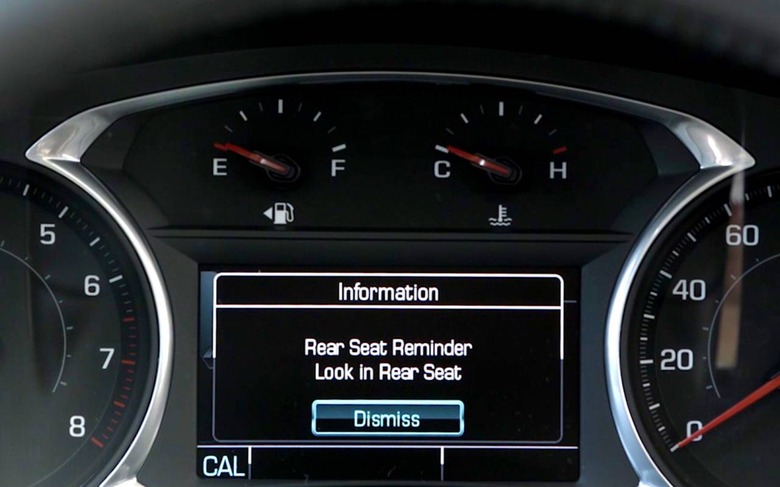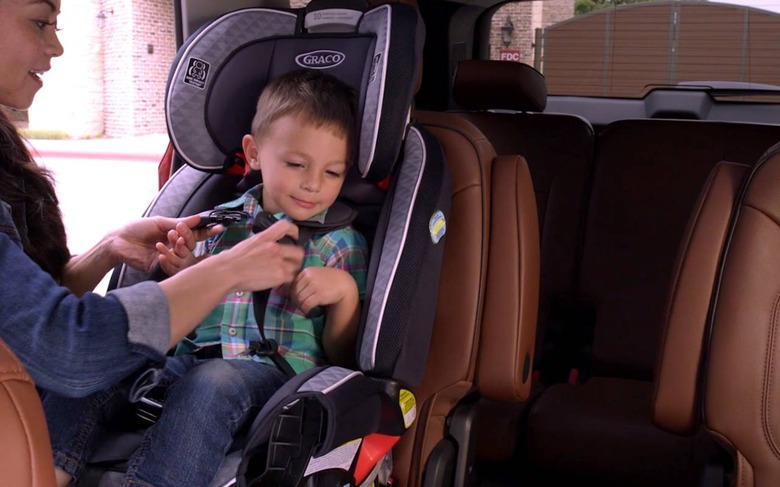Tesla Needs FCC Go-Ahead For Tech Trial To Prevent Forgotten Child Deaths
Tesla has developed a new system that could help warn parents if they're about to leave their children in the car, potentially helping avoid situations where kids have died due to extreme temperatures. The proposal, currently being considered by the US FCC, wouldn't be the first "forgotten child" system on the market, but the electric car company argues that it's more nuanced than what's currently available.
Leaving behind children, particularly in the back sears of the vehicle, is an unexpectedly common issue. It's also potentially fatal: extremes of temperature that build up in cars during hot weather have been blamed for more than 50 child deaths through heatstroke in 2019 and 2018, with more than half blamed on people forgetting the child was there.
Automakers have responded with systems that try to remind people when they leave a vehicle that there's potentially a child in there. The simplest track whether the rear doors were used at the start of a journey; more complex versions have pressure sensors, tracking when there's weight on a seat. At the end of the trip, as the driver opens their door, a warning – usually accompanied by a sound – flashes up to check who might still be in the vehicle.
Tesla's system, according to its filing with the FCC spotted by Reuters, relies on mmWave radar instead. It would be focused on the interior of the car – though Tesla does say that it could be theoretically "cabable of scanning up to 2 meters outside of the vehicle" – and be able to not only sense a child left behind, but "see" them through materials such as blankets.

As for Tesla's system versus existing versions, "unlike in-seat sensors, mmWave can differentiate between a child and an object left on the seat, reducing the likelihood of false alarms" the automaker points out. Regular false alarms or less granular warnings could end up leading to drivers simply tuning out the notification, reducing its effectiveness. Millimeter wave can also track things like breathing patterns and heart rates, Tesla says, which cameras and in-seat sensors would not be able to monitor.
The reason for the FCC's involvement, however, is that the mmWave system it has in mind would operate at a higher power than current regulations permit. There, though, there's prior form in bending the rules. Tesla highlights that tech like Google's Soli was previously granted an exception in 2018 under a "short-range devices for interactive motion sensing" amendment first made back in 2016.

Even those who don't transport kids might be interested in Tesla's trials. The same mmWave system could also be used for other safety features, the automaker suggests, like more targeted seat belt reminders and even adjusting the response of airbags in the case of a crash. An EV could optimize how the bags are deployed depending on the body size of each seat occupant, for example.
Security is another possible advantage. Tesla suggests that mmWave sensors could better track broken windows and intrusions, as well as working in tandem with existing systems to reduce false alarms. It wouldn't be the automaker's first interior sensor, either, with the Model 3 introducing a new, cabin-facing camera.
The FCC is currently taking public comment on the request, with interested parties having until September 21 to file.
